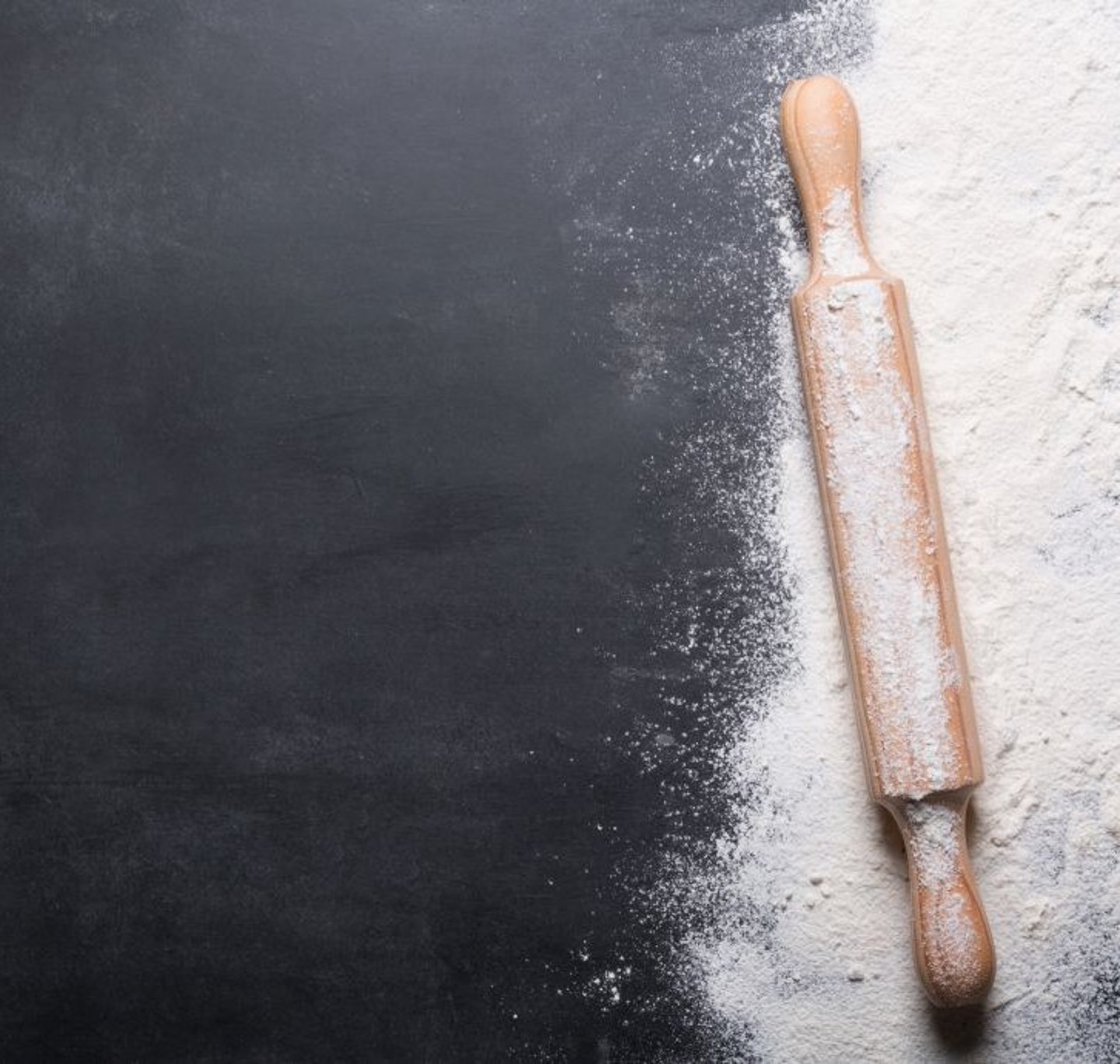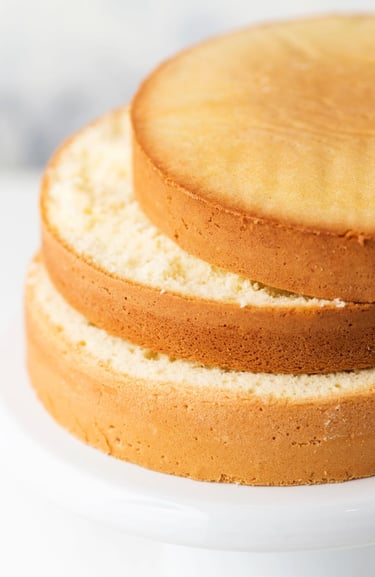
Basic Sponge Cake
Delicately soft, airy, and melt-in-your-mouth delicious, this classic sponge cake is a timeless favorite for any occasion. Made with just a few simple ingredients—eggs, sugar, flour, baking powder and a touch of vanilla—this cake is all about technique, creating a perfectly risen, golden-brown beauty that serves as the ideal base for layered cakes, trifles, or enjoyed simply with a dusting of powdered sugar.
Whether you're a beginner or a seasoned baker, this fail-proof sponge cake recipe delivers consistently light and tender results. Serve it with fresh fruit and whipped cream, or dress it up for birthdays and celebrations—the possibilities are endless!
Don't forget to check out my flavor variations at the bottom of the page!
Need to frost the cake? Get my frosting recipe 👉here.
Ingredients:
Makes 2-9" cakes
150 gr bread or all purpose flour, sifted
300 gr eggs (approx. 6 large eggs)
300 gr sugar
1/2 tsp baking powder
2 tsps vanilla paste or extract
2- 8" cake pans
Instructions
Separate the eggs – place yolks in one bowl and whites in another.
Whip the yolks with half of the sugar until the mixture is pale and has doubled in volume.
In a separate bowl, whip the egg whites until glossy, gradually adding the remaining sugar. Continue whipping until stiff peaks form.
Mix the flour and baking powder together in a small bowl.
Fold the flour mixture into the yolk mixture in thirds (1/3 at a time), being careful not to deflate the batter.
Gently fold in the meringue (whipped egg whites) into the yolk-flour mixture until just combined.
Pour the batter into parchment-lined cake pans.
Tap the pans 3 or 4 times on a hard surface to release any large air bubbles.
Bake for 30–35 minutes, or until the top is golden and a toothpick inserted into the center comes out clean.
Remove from the oven and immediately invert the pan onto a wire rack (if the pan is tall enough to support this) or let it cool upright.
Once cool, run a knife around the edges of the cake and gently release it from the pan.
Delicious Flavor Variations
Lemon Sponge Cake
Add: 1 tbsp fresh lemon zest + 1 tbsp lemon juice
Optional: Replace vanilla with lemon extract
Perfect with: Lemon curd, whipped cream, or a light glaze
Chocolate Sponge Cake
Swap: Replace 20g of the bread flour with unsweetened cocoa powder (use 93g flour + 20g cocoa)
Optional: Add ½ tsp espresso powder to enhance the chocolate flavor
Great for: Layer cakes with ganache or chocolate buttercream
Coconut Sponge Cake
Add: 1 tsp coconut extract
Optional: Fold in 2–3 tbsp finely shredded, unsweetened coconut (very gently!)
Topping idea: Coconut whipped cream & pineapple for a tropical twist
Vanilla Berry Sponge Cake
Keep the base vanilla recipe
Add: Layer sliced fresh strawberries, raspberries, or blueberries between layers with whipped cream or mascarpone
Optional: Brush layers with berry syrup for added moisture
Nutty Sponge Cake
Add: ½ tsp almond extract
Optional: Replace 20g of the flour with finely ground hazelnuts or almonds
Serve with: Chocolate ganache or coffee cream
Coffee Sponge Cake
Add: 1–2 tsp instant espresso powder dissolved in 1 tsp hot water, added with the vanilla
Perfect for: Tiramisu-inspired cakes or pairing with mascarpone filling






